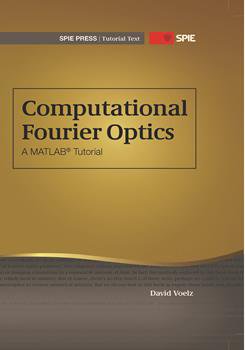|
1.1 A Little History and Purpose The branch of optical science known today as "Fourier optics" had its genesis in the 1940s through the 1960s with the application of new telecommunications and circuit design analysis techniques in optical diffraction theory. In 1968 this upstart discipline was given a permanent foothold with the publication of Introduction to Fourier Optics, by Joseph W. Goodman, a seminal textbook that explained and united the fundamental concepts, and which continues to add significantly to the application of Fourier optics in subsequent editions. Fourier optics is now the cornerstone for the analysis of diffraction, coherence, and imaging, as well as specialized topics such as wavefront control, propagation through random media, and holography. The study of Fourier optics today leads naturally toward the computer for at least two reasons: (1) diffraction integral expressions are difficult to solve analytically for all but a few of the simplest aperture functions, and (2) the fast Fourier transform (FFT) algorithm combined with the linear systems framework of Fourier optics provides an extremely efficient computational approach for solving wave optics problems. Certainly, the computer can be applied directly in finding exceedingly accurate solutions to diffraction problems using numerical integration techniques. However, this book is really about the FFT and how to apply it to a variety of Fourier optics problems. The computer coding steps mirror the analytic concepts and the FFT's speed makes it possible to perform thousands of optical propagation or imaging simulations in a reasonable amount of time. In fact, the methods explored in this book form the basis for wave (or physical) optics simulation tools that are widely used in industry. But, of course, there's no free lunch (...if there were, perhaps we could be eating while studying Fourier optics...). It turns out the FFT is an accomplice to various numerical artifacts. We do our best in this book to expose these issues and provide constraints to help minimize the damage. This is also a tutorial text with step-by-step instructions, not only for coding Fourier optics problems, but also for MATLAB, our software application of choice. So, if you are new to MATLAB, don't worry! |
|
|


